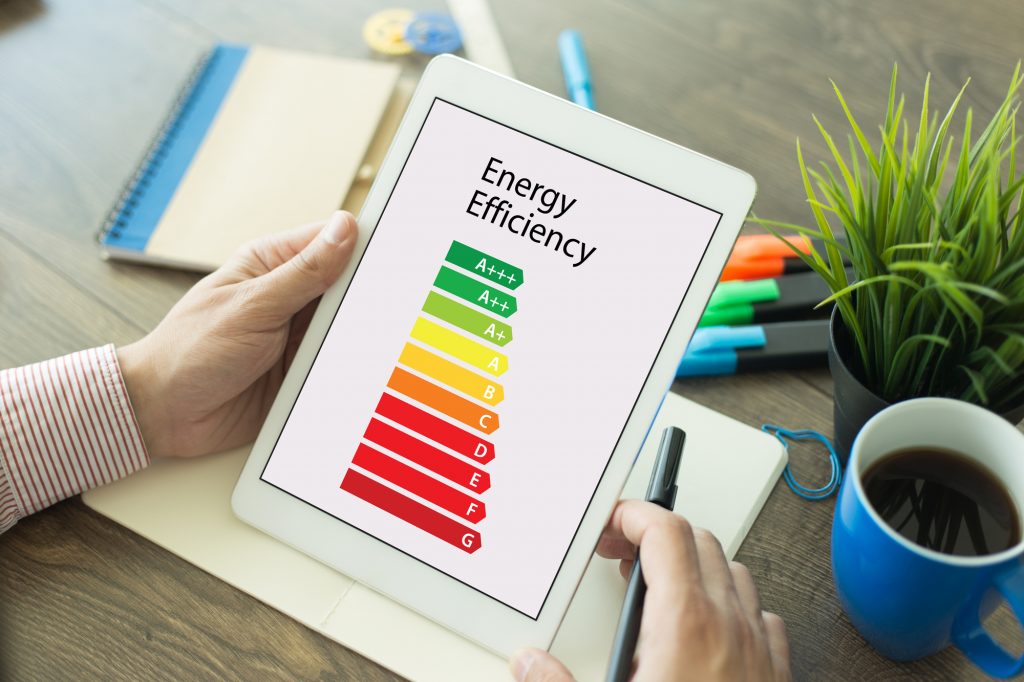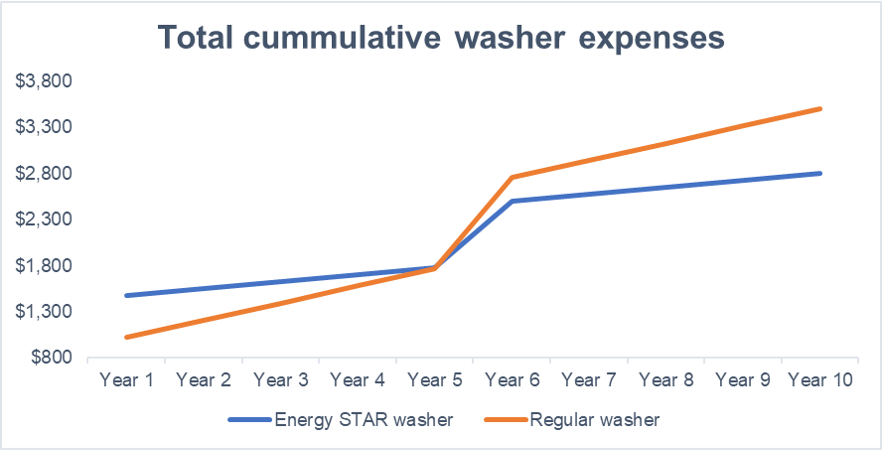10 Different Ways To Save Energy At Home

Share this 10 Ways of Saving Energy at Home Infographic On Your Site
Who isn’t looking for new ways to save energy at home and money on utility bills? One natural solution is to reduce household energy use (and your greenhouse gas emissions at the same time).
But energy-saving tips often sound far-fetched and expensive. Is it possible to use less electricity without pricey sensors or major sacrifices in the comfort department? Of course. We bring you affordable ways to reduce your electricity costs at home to help your wallet and the environment.
10 Ways To Save Energy At Home
Invest in energy-efficient LED light bulbs
When you need to buy new light bulbs, replace them with LEDs. Incredibly, LED light bulbs use at least 75% less energy, and last 25 times longer, than incandescent lighting. That means that if you currently have 30 light bulbs at home, you can save up to $200 in a year if you upgrade all light bulbs to LEDs. Plus, they will last you significantly longer!
Unplug electronics before bedtime
Get in a habit of unplugging appliances you are not using, or before you go to bed – be it lamps, laptops, or a stereo. Even items that are turned off with a button still consume electricity and when added up, cost you a few extra dollars on your utility bill. Consider getting a smart power strip, which shuts off electronics that are no longer in use, to avoid high standby power costs.
Reduce your hot water temperature
No one likes cold water when you shower. But if your water heater thermostat is set at 140ºF by default, you might not only be burning through $61 annually in standby heat losses but potentially also facing a safety hazard—scalding. Reducing your water heater temperature to 120ºF will not only save you money but will slow mineral buildup and corrosion in your water heater and pipes.
Be stingy with water
Don’t let the water run continuously while you brush your teeth or apply shampoo to your hair. Take showers and treat yourself to a long bath only on special occasions. According to research, 41% of all hot water energy goes to waste -creating an expensive, environmentally-damaging problem.
Insulate your water tank
When on standby, your uninsulated water tank is responsible for 25%–45% energy losses. One of the clever and surprisingly cheap ways to save money and energy is buying a tank jacket or blanket from your hardware store (approx. $20) and watching this simple DIY guide to insulating your tank.
Stop pre-rinsing
This little nugget of information might save you a chunk of time and money – here it goes: Most of the newer model dishwashers are already designed to break down food particles from dishes, so there is no need to pre-rinse them. Your dishes will be sparkling clean regardless and you will save up to 6000 gallons of water.
Turn off the oven early
If you turn the oven off about 5 – 10 minutes before the meal is done cooking, the leftover heat will easily finish the job for you. If you use your oven approximately twice a day, this can result in annual savings of up to $80.
Use indoor plants
What do plants have to do with your electricity? Some indoor plants such as aloe vera, golden pothos, and gerbera daisies release moisture in the air trapping in the heat. Your home will stay cooler during the hot summer days and you won’t have to turn on the air-conditioning. The eerie peace created by the jungle-like greenery will be just a bonus!.
Increase the energy efficiency of your installed windows
Replacing the windows can get expensive so here are a few affordable alternatives:
- Add exterior shading, shutters, screens, and awnings to provide an extra layer of insulation
- Add storm windows or panels
- Weatherize your windows with this cool DIY guide
Close your blinds
…in summer and open them up in winter. You can save money on your energy bills by using your blinds to your advantage. Closed blinds can reduce the room temperature by a few degrees and eliminate the need to turn on the air conditioner or a ceiling fan. In winter, they let the sunshine in and make the room warmer.
Why Do You Need To Save Energy?
Your home is the perfect place to start conserving energy – whether it’s by choosing energy-efficient appliances, consciously reducing your energy consumption, or avoiding waste. If you are not yet an environmentalist and don’t see the point in changing your habits, let us offer some arguments for energy saving. The truth is – there are several benefits.
 | Reduce Utility Bills and Save Money - Your energy bills are tied to your monthly energy use, so the more energy-efficient you are, the lower your bills (some estimates say that you can save as much as $500 by conserving energy). |
 | Increase Property Value - Homes fitted with equipment to conserve energy sell for a higher price on the real estate market. Buyers are willing to pay an additional $8,728 for homes with better insulation, an energy-efficient HVAC system, or a cool roof and $9,274 for a home with solar panels. |
 | Better quality of life - Air sealing and other home weatherization techniques increase comfort and reduce indoor air quality problems. The air is full of indoor pollutants like radon, mold, and other particles, potentially leading to a variety of health risks, so well-ventilated dry air will reduce the risk of diseases. |
 | Protect the environment - Alright, we are just going to say it. Residential energy use accounts for roughly 20% of greenhouse gas emissions in the United States, mostly from heating, cooling, and powering electric appliances. If you care about breathing clean air and preserving the Earth for your offspring, this is a great place to start changing your habits. |
What Are Energy Efficient Appliances?

A home outfitted with ENERGY STAR products will use about 35% less energy and potentially save you $250 or more per year on utility bills. It might cost you a bit more upfront, but these appliances will pay for themselves in the first cycle in electricity savings.
In simple terms, the Energy Star certification is a mark of energy efficiency. Every appliance in your household essentially comes with two price tags (even if the second one is hidden) – the purchasing price and the cost to operate the appliance on regular basis. Energy STAR appliances have a significantly lower operating cost, saving energy and money in the long term.
Energy STAR appliances will also perform better, making your life easier. Energy STAR certified washers can wash more clothes within a single load, while Energy STAR dryers offer faster drying compared to many standard models.
Are Energy STAR appliances more expensive? We are not going to lie – there are. On average, you will pay 40% more for an Energy STAR appliance, which might seem like a lot. However, from day one this appliance will consume 50% less electricity, so you will get the money back (with interest!) in the long run.
Don’t believe us? Ok, let’s consider that you need to replace your washer and you are deciding between a regular or an Energy STAR certified appliance.
| Appliance Type | Initial Price | Annual costs |
|---|---|---|
| Energy STAR washer | $1,400 | $75 |
| Regular washer | $840 | $185.0 |
This is what your cumulated expense looks like over the course of ten years. While the initial expense for the Energy STAR product is higher, it is soon absorbed by the savings generated from lower power consumption. In ten years, you will have saved nearly $700!

What Season Consumes The Most Energy?
Heating and cooling are responsible for nearly half of your total electricity bill, so it should come as no surprise that your home energy use is highest in seasons when you need to blast the air conditioning the most – hot summers and the dead of winter.
The annoying fact is that not only do you use and therefore pay for more electricity in summer and winter, but the electricity rates during those months are higher too! The culprit is the peak demand – as usage at most households increases, the utility companies have to raise the prices to balance out the supply.
One way to prevent these spikes in electricity prices is to lock in a fixed electricity rate for the duration of one year – no matter how much the wholesale price of energy goes up, you will continue to pay the same rate.
You can also take steps to reduce the heating and cooling costs of your air conditioner – for example by closing your blinds and curtains or investing in insulated cellular shades you can reduce window heat loss or gain by up to 40%.
If possible, turn the air conditioner off in the rooms you don’t use often. Set timers to switch the AC off at regular intervals. Use ceiling fans to help your AC spread the cold air through the room. Finally, if you can afford it, invest in a programmable thermostat – this clever device will learn your routine and adjust your home temperature to maximize your comfort and energy savings.
Daily Habits That You Can Practice To Conserve Energy

When it comes to energy conservation, even small steps in the right direction count. Saving energy is a muscle that you have to train. Here are few daily tricks to get you started:
1# Turn off the lights – get in a habit of turning off the lights when you leave the room.
2# Replace appliances with energy-efficient options – When it’s time to invest in a new microwave, fluorescent bulbs, or electronics, shop around to see if a more energy-efficient alternative is in your price range.
3# Fill it up – Don’t run a half-empty washing machine or a dishwasher. Wait a couple of extra days to fill it up and then press start.
4# Sleep mode – Put your computer in sleep mode to save 34 dollars on your annual energy bill. It only takes a fraction of a second longer to turn back on.
5# Shop for green energy plan – Next time you are ready to switch suppliers, look for a 100% renewable electricity plan to support a local solar or a wind producer.
FAQS
Is It Easy To Save Energy?
Practicing energy efficiency and conservation is important, both for your wallet and for the environment. It doesn’t have to be expensive and it doesn’t come at the cost of sacrificing your comfort. Check out our 25 ways to save energy in every room of your house for affordable, easy energy-saving tricks.
Do You Really Need To Switch To LED Bulbs?
LED bulbs are a cheap, energy-efficient, and safe place to start your energy usage home improvements. An LED light bulb is twice as efficient and lasts 25 times longer than a regular light bulb. In addition, LED lights come in a variety of shapes, colors, and styles, giving you an opportunity to get creative.
What is Daylighting?
Daylighting is a building design strategy to maximize the illumination of your indoor space by natural light, reducing the need to use electricity for lighting. Strategically placed windows are the most common design elements to make daylighting possible – you want your workspaces (a desk area or a kitchen counter) to get as much light in the morning and in the afternoon as possible. Other ways include installing a skylight or adding a reflective surface such as a mirror in the room to increase the lighting effect from windows.
Final Thoughts
Reducing your energy consumption can be a rewarding experience both for your wallet and the environment. It doesn’t have to be hard or expensive to use less energy – we hope that the above energy-saving tips have shown you where to start.
Updated on
